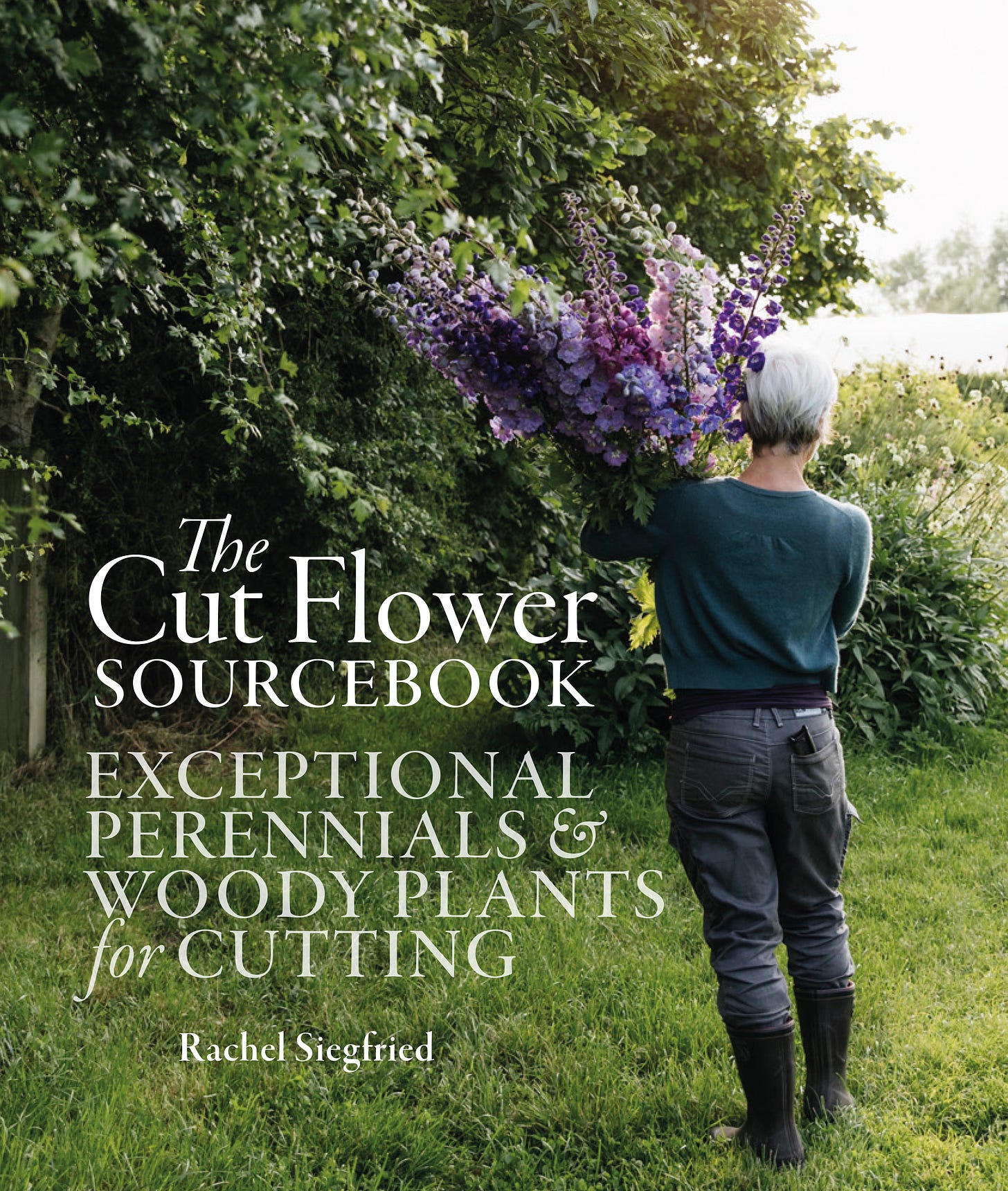Is there anything new for gardeners to learn about growing cut flowers? Creating a cutting patch has been on the radar of UK and US gardeners for almost a decade due, in part, to a growing awareness of the environmental impact of imported flowers and a vogue for wilder style arrangements that capture the essence of the garden. Cue The Cut Flower Sourcebook by Rachel Siegfried, a book that turns on its head the usual emphasis on growing annuals, biennials and bulbs from scratch by highlighting exceptional perennials and woody plants.
The benefits of using ‘woody cuts’ as cut flower are myriad. Trees and shrubs repeat year after year and as require less water, less compost and fewer plastic plant pots than growing annuals and biennials. They fill the cut flower ‘hungry gap’ early and late in the year and offer wider benefits for wildlife.
Rachel Siegfried is a gardener and the founder of Green & Gorgeous, a 4-acre Oxfordshire flower farm where she grows mesmerising combinations of flowers. Hers is a garden-led approach; she selects plants with the surehand of a gardener and the arrangements in each bunch of filled vessel are informed by their natural growth habits, which she had had the benefit of closely observing outside.
It takes three to five years before a shrub or tree can be tentatively harvested for cutting and so it makes sense to choose the best from the start. The Cut Flower Sourcebook includes a directory of 128 plants that make good candidates and plentiful practical information and growing tips. There are specific notes on planting, picking and conditioning individual cultivars and, usefully, details on the contribution each subject makes to the vase - Alder with catkins will define spring in a standalone arrangement, hawthorn has characterful shapes and a crab apple will do triple-duty offering foliage, flowers and then fruit.
This book offers inspiration aplenty for those new to growing cut flowers and it will also encourage more experienced gardeners to look anew at what is already growing outside.
5 exceptional ‘woody cuts’
selected by Rachel Seigfried
Amelanchier lamarckii
A small, versatile deciduous tree. Useful when the flowers are still in tight bud – like little points of light on dark stems with just a hint of the rosy-bronze foliage that will follow. Their fine branching form is a stylish, airy framework for heavy-headed tulips.
H. 2.5m SI. mid-spring, autumn
-
Cornus mas
An often overlooked shrub from the dogwood family with dainty star shaped flowers. Best picked in bud and forced indoors. Combine with other early flowering branches, such as pussy willow and cherry blossom.
H. 1.5 SI. spring
-
Crataegus monogyna
The thorny branches of common hawthorn are quickly clad in lichen and create interesting shapes in winter displays. The bright green, lobbed leaves are some of the first to emerge in early spring and hold surprisingly well.
H. 4m SI. year round
-
Philadelphus
Mock orange
Fresh green foliage and arching stems provide plenty of length for arching arrangements. A useful supporting flower for roses.
H. 1.8 SI. summer
-
Prunus cerasifera
Cherry plum
An early flowering blossoming branch with sparse beauty. Fragrant white, delicate flowers appear in late winter on naked, dark, twiggy stem. Best appreciated in a simple, stand-alone arrangement.
H. 3m SI. spring
The Cut Flower Sourcebook: Exceptional perennials and woody plants for cutting Rachel Siegfried, photography Eva Nemeth. Filbert Press, £35 ISBN 9781739903923
On sale 23 March
Photography Eva Nemeth





